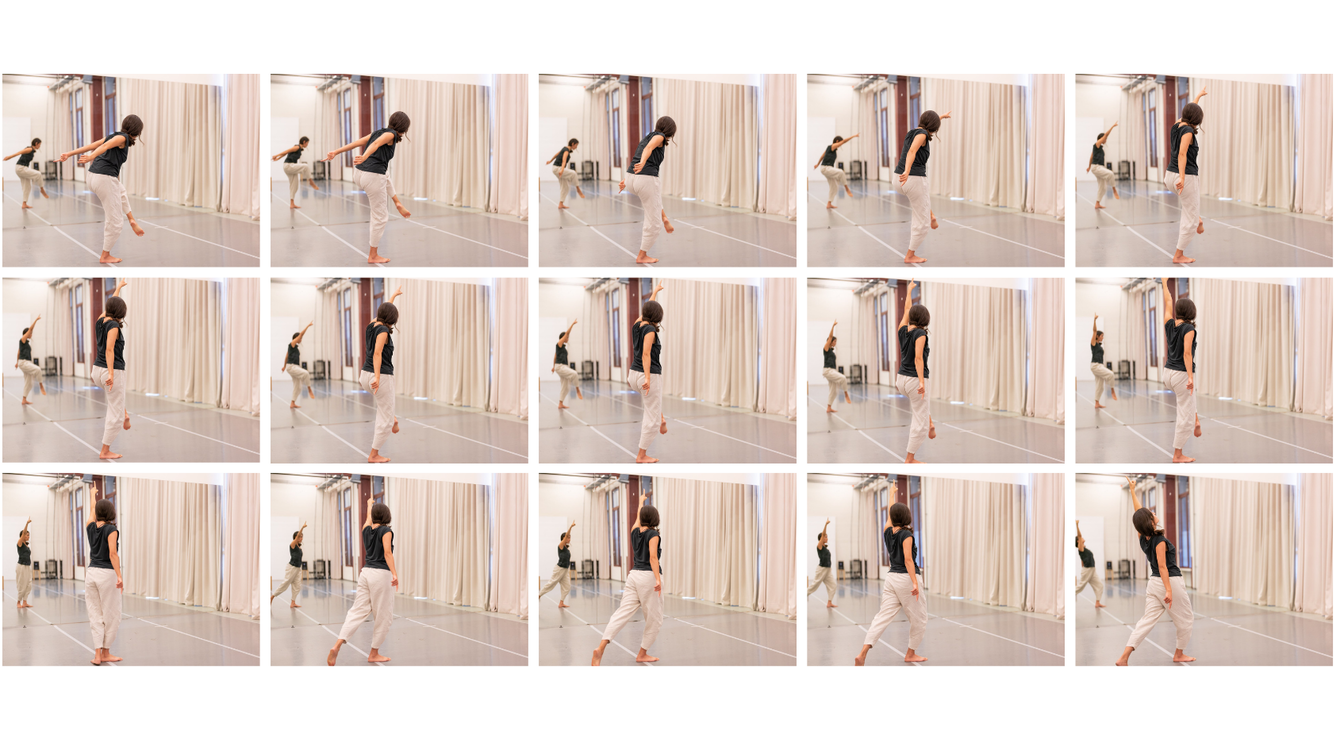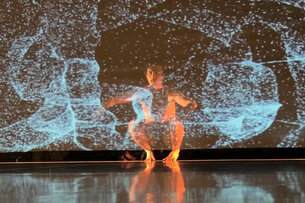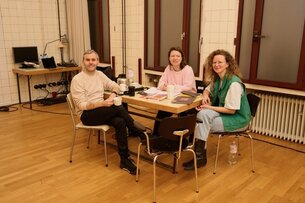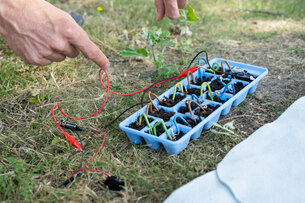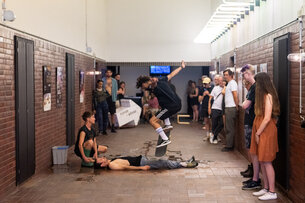#ResidencyInsights
Saghar Hosseinpour
Themen
Residenzen
Saghar Hosseinpour speaks about her research on ›Revealing the latent phase (2)‹ in her PACT residency.
Can you tell us more about your research at PACT?
During this residency, we were working on a software remotely with Hesam Ohadi (kino), who is a creative coder. We have recently been working together for this new phase. He has brought a great knowledge of artificial intelligence to the project. The software we made is based on random capability that creates a new layout with a different rhythm each time you click start. It draws from the extensive movement vocabulary that is given to it.
Creating a situation like this, which is also possible by manipulating and disturbing the spaces, is accompanied by a kind of playfulness, in which sometimes I involve myself, sometimes others. I see and document what arises. I never know exactly what will happen next or what am I going to do with the materials. In the past, it has always been an unpredictable, random trend that has illuminated the next stage. What I do know is that my focus is more on the compositions and movements that emerge and transform. I like to take them out of the situation to study their possibilities in a different context. It is like an endless game in which the next stage lies and is only revealed by playing it. Or like a puzzle, which gives you many possibilities for arrangement.
Now if we return to this practice, (let’s call it 'the machine'), it provides a space for the executor to constantly find her/himself in an unfamiliar physical position that is not of her/his choice.
In this process, such questions are researched:
How to prevent the entry of habits and the representation of thoughts and memories while moving?
How can a disruptive factor deviate the mind from recognizing and defining what is happening at the moment?
How to stay in the execution of a task and not get into the representation of doing it?
How will you continue your research?
To dig in, we are curious to experiment with some Artificial intelligency tools such as a brainwave sensor that is able to capture frequencies from the subject’s brain and decipher different states of mind and feelings from it. This possibility can be added to the machine to completely change the command as soon as the executor starts entering her/his comfort zone.
